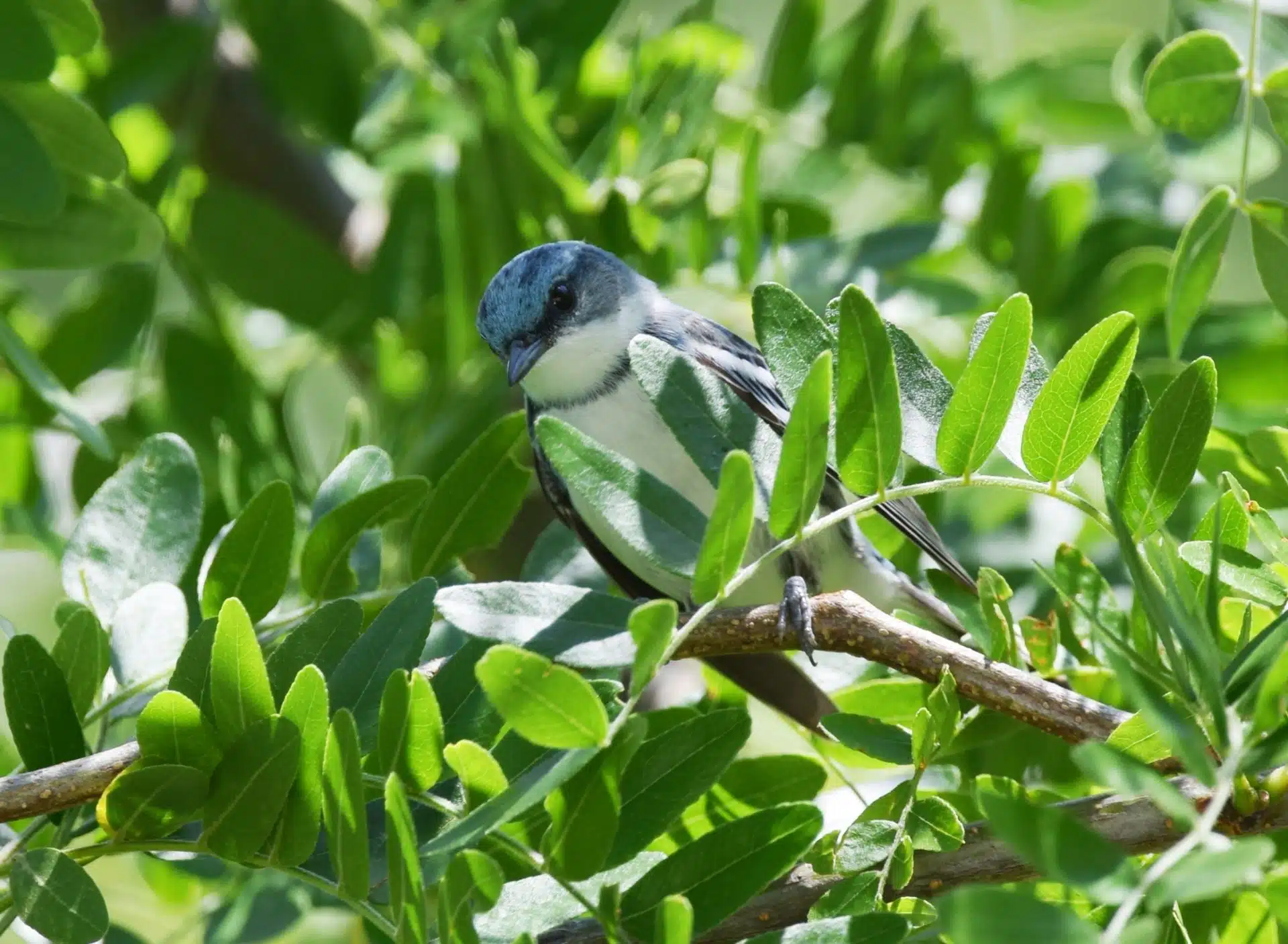Nature Profile
Birds
Cerulean Warbler
Dendroica cerulea

Cerulean Warbler
Voice: Buzzy notes ending in a higher pitched trill, "zee zee zee zizizizi eee."
The Cerulean Warbler gets its name from the vivid blue coloration of the male warbler's back and cheeks. Despite is azure color which makes it easy to identify against other wood warbler, it is one of the most difficult warblers to view during breading season. Ceruleans spend most of their time in the tree canopy of contiguous tracts of deciduous forest. While they are in the tree tops they typically eat by quickly picking off insects including bees, wasps, caterpillars, moths and weevils.
Bottomland forests, low-elevation woodlands along rivers and lakes, have been thought to be the preferred habitat of this bird but according to the Cornel Lab of Ornithology ceruleans have also been observed nested in upland forest habitats. In the spring males make their way up from South America before the females seeking out the desired habitat. Females follow a short time after searching out singing males whom have already established territory. When a female finds her mate, it has been observed that male will softly sing to the female coercing her to build her nest in a proper location.
Once a location is set a female construct a shallow nest of fine grasses, plants, bark strips, mosses, and lichens. The nest is lined on the outside with spider webs. It is constructed 20-60 feet above the ground on the end of a horizontal limb. Females incubate 3 - 5 brown spotted, gray to creamy eggs for up to 13 days before they hatch. While nesting the female may exit her canopy nests by “bungee-jumping” from the nest. She free fall from the nest for a short distance only to open her wings and fly when she is well below the nest. This behavior of falling like a leaf may destract animals from praying on the nest. Both males and females care for the young.
Besides spending most of it time at the tops of trees moving fast gleaning insects, Ceruleans warbler are hard to see because of their severe declined as a species. Overall “Ceruleans have shown one of the steepest declines of any warbler species, showing a decline of -4.5% per year from 1966-2001,” according to Breeding Bird Survey. In Ohio, this bird has declined by 80% over the last 40 years to an estimated population level of 70,000 individuals. Destruction of large tracts of forested land and land-uses changes has been the major downfalls of this species. Breeding forest where much of the original biodiversity has been lost and remaining forests fragmented and isolated are part of the problem. Forest land in South America destroyed for the production of sun grown coffee beans obliterate the wintering grounds of the Cerulean and many other species of Ohio’s migrating birds.
Want to help the Cerulean warbler? Support local environmental organizations that protect large tracks of forested land. Buy shade grown coffee beans in local grocery store.
Photo Credit: Andy Reago & Chrissy McClarren, CC BY 2.0, via Wikimedia Commons




